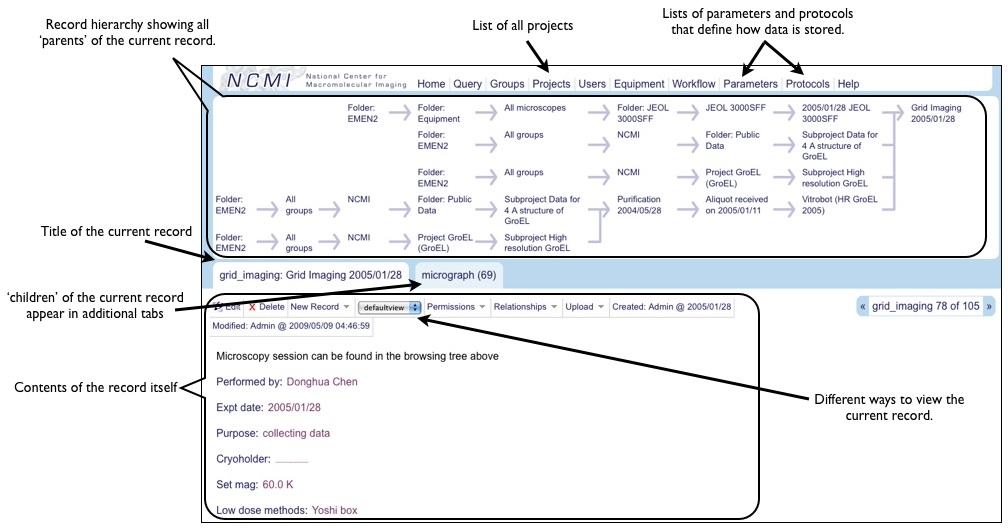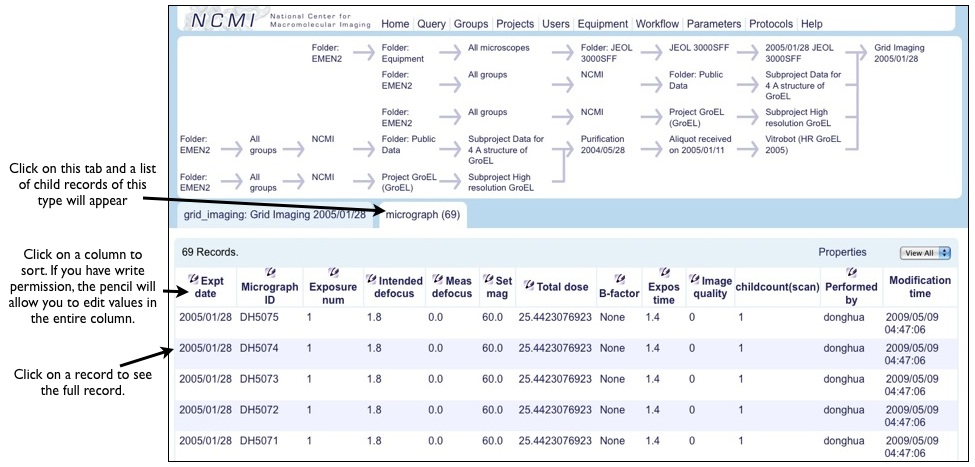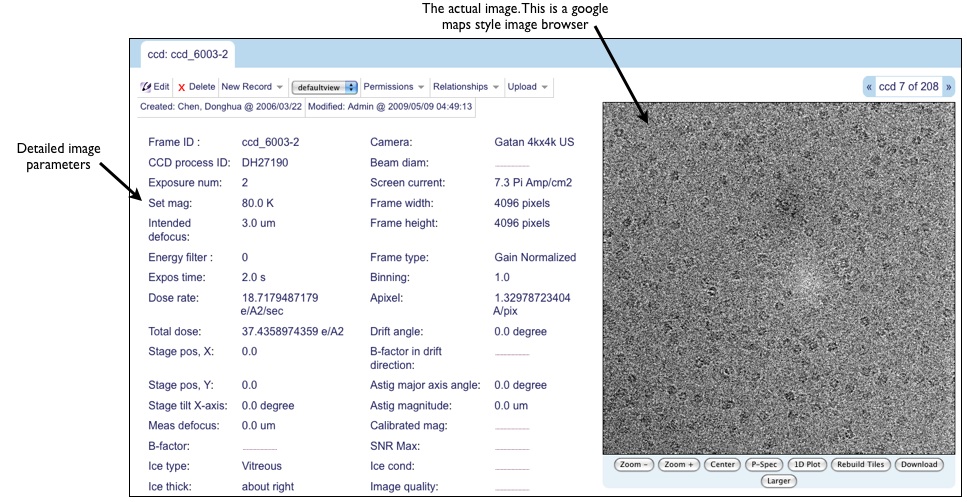EMEN2
(Electron Microscopy Electronic Notebook)
EMEN2 is an object oriented database and electronic lab notebook. It is designed to store scientific data in a freeform way without limiting the ability to search/mine the results. Unlike a traditional database, where the contents of each record type (table) must be defined by a database administrator and strictly adhered to, each individual record in EMEN2 can have arbitrary additional parameters outside the record definition, and all such parameters remain fully searchable.
Records in the database may be arbitrarily linked to each other, much like the web. Any record may link to an arbitrary number of other records of arbitrary type (the record's children). Many other records may link to each record (the record's parents). This permits, for example, a publication to be linked into a publications folder as well as being linked to a specific project; or a microscopy session may be a child of both the biological research project as well as the microscope the data was collected on.
This is a view of the web interface for the EMEN2:

At the top is a 'tree' viewer which allows you to view all of the records which are parents of the current record, and their parents, etc. Children are listed by category in tabs next to the record title. Clicking on one of the children tabs will produce a list:

Certain types of records will have specialized displays, such as CCD frames/scanned micrographs. This will provide a 'google maps' style image display widget permitting you to browse any image at any level of detail. These images are somewhat compressed for display on the web, but are otherwise faithful represenations of the image up to full resolution:

If you have appropriate permissions, you can click on any field/parameter in this record and bring up a text box to edit the value. Note that as this system mimics a physical lab notebook, any time a value is changed in any record, a log entry is made indicating the old value, when the change was made, and who did it. This provides for complete traceability of records back to their initial entry. Users can also be granted 'comment only' permissions on records which permits them to add comments to records but not change the values of any parameters.
Note that users accessing the public data server will not have permission to change things.
There are many other features in this database far beyond the scope of this basic introduction. Please refer questions to sludtke@bcm.edu.
